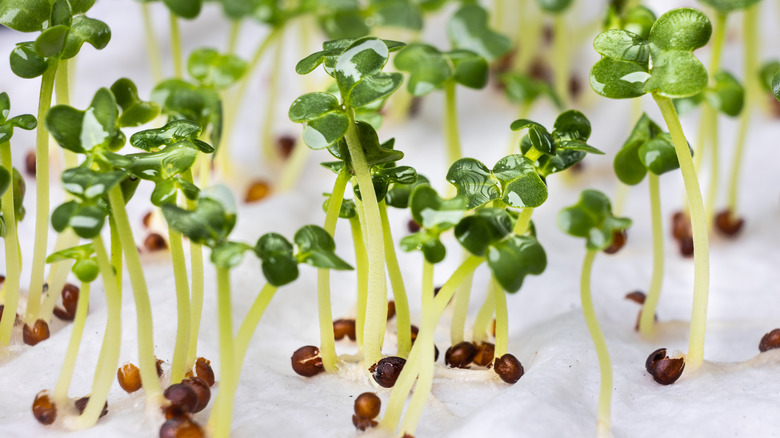What Is A Seed Sprouter And How Can It Benefit Your Garden?
A seed sprouter is a device that is commonly used to grow your own sprouts indoors. These sprouts are what the seeds produce as they germinate, and consist of tiny roots and seed leaves. They are highly nutritious and can be added to salads or enjoyed on sandwiches. There are many different types of seed sprouters that you can purchase, usually at health food stores or online. The simplest option is just a glass jar with a screen on the top that enables you to rinse the seeds twice daily and easily pour off the water without losing the seeds. This is an easy way to start your garden in winter with microgreens that even a novice can grow.
The most common seeds used in seed sprouters are alfalfa, broccoli, green peas, mung beans, mustard, radish, red clover, and lentils. But, while you could use this item to make a whole variety of delicious sprouts to add flavor and crunchiness to your meals, you can also pre-germinate your seeds before planting them in your garden or in pots. This could help to ensure good germination rates and speeds up the growth of your plants. Just bear in mind that many commercially available vegetable seeds may have been treated with chemicals such as pesticides. So, you may want to have a separate sprouter for these instead of the one that you use to produce the sprouts you're going to eat.
How to use a seed sprouter to pre-germinate your seeds
Inexpensive sprouting jars and sprouter tops made from either metal or plastic are available from health food stores or online. These tops can be used on any clean jar you have at home that has a wide mouth. Or, you can just use cheesecloth for the top of the jar and secure it with a rubber band.
To sprout your seeds successfully, you should soak them in clean water for around 12 to 24 hours. This a trick you can use to increase seed germination rate for a flourishing garden. Place a thin layer of seeds in the bottom of the jar and totally cover these with water. Sit your jar on your kitchen counter and place it on its side out of direct sunlight. The following day, attach the mesh top on top of the jar and drain off all the water. Rinse the seeds with clean water twice, ensuring that you drain off the excess water each time. Then, sit the jar back on the bench on its side.
Continue to rinse the seeds twice daily and always drain off the water before sitting the jar back on your bench. Your seeds should start to sprout in around three to six days. Once sprouted, remove the seeds from the jar and plant them carefully in a pot filled with quality potting soil. Handle the sprouts gently so that you don't break off any roots or young leaves.
Another way to sprout seeds if you don't have a seed sprouter
If you don't have a seed sprouter on hand or don't want to bother with one, there are other ways you can sprout your seeds to help them germinate before planting them. One of the easiest methods is to sandwich some seeds between pieces of a wet paper towel and then place it in a sealed plastic bag to keep everything moist. For this method, you still want to soak the seeds in water overnight first. This softens the seed coat and starts the germination process.
Fold a piece of paper towel so that it will fit neatly into a clear plastic bag, such as a sandwich bag. Add a small amount of water to the bag to moisten the paper towel. Carefully position some seeds inside the folded paper towel, making sure that they're evenly spaced. Seal the bag and place it onto a warm windowsill, but out of direct sunlight. Monitor the seeds daily and keep the paper towel moist.
You should start to see the seeds sprouting within a few days. Once there are newly sprouted roots and shoots, take them out of the bag and carefully plant them into potting soil. Using a pair of tweezers might make handling the small sprouts easier. You can use this paper towel hack to easily germinate lemon seeds, as well as many other types of seeds.


